16 Indoor Cactus Types to Bring the Green Inside
Author: Jen Worst | Editor: Omar Alonso
Review & Research: Jen Worst & Chris Miller
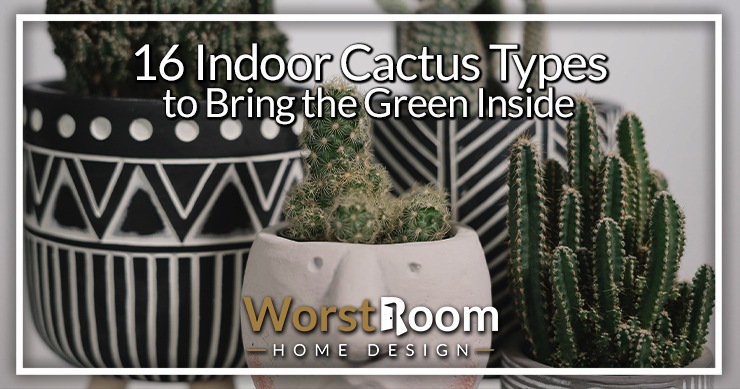
Cactii are an easy way to introduce yourself to gardening and to beautify your home with beautiful succulent greenery around your house. Indoor cactus types are plentiful and you'll enjoy all the options at your disposal.
There are different types of cactus indoors like Angel Wings Cactus, Rat Tail Cactus, Christmas Cactus, etc. All these enhance the beauty of your home and are also pretty low in terms of maintenance, thus making it more convenient for everyone to look after.
In this article, our experts have given detailed information regarding the different types of cactus house plants and how they can give a more appealing look to your space.
16 Indoor Cactus Types
There are many varieties of indoor cactus plants to choose from to beautify your home and give it a nice lush, lively look. Here, we'll discuss a few different and common types of cactus that may grab your attention and help you decide on which one to get.
Angel Wings Cactus
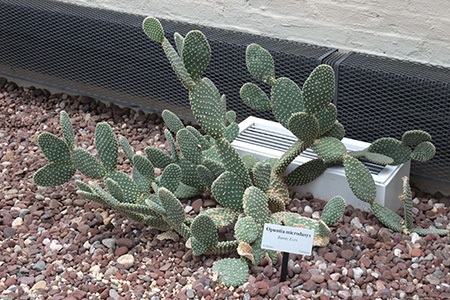
Angel Wing Cactus is native to northern Mexico and desert regions. It grows from 2-3ft in length to 4-6ft in width when mature.
During the summer, it needs full sunlight and is potted with cactus growing soil that is ideal for its growth and prevents the roots from rotting. Make sure you understand the general process for keeping indoor cactus healthy, and then dig into the peculiarities of each type you end up choosing.
In the winter, it needs a cooler temperature around 50-60F, slight water, and partial sunlight to bloom. If these conditions are not met, the cactus will die because it is not tolerant to frost.
African Milk Tree
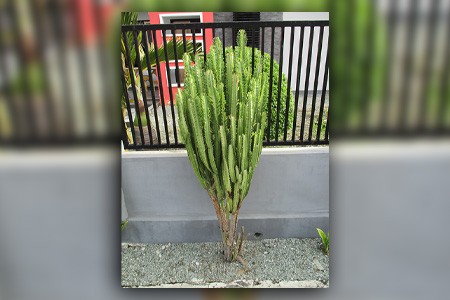
The African Milk Tree is mainly from Central Africa, where it is generally grown as hedges for its impressive growth, which has granted it multiple different nicknames, one of which is the "good luck plant."
These cactus types indoors can grow anywhere from 1-2 ft a year and 8 ft throughout its life, which you won't allow to happen inside, obviously. Growing this indoors requires an arid climate where the temperature doesn't drop below 50 °F at night.
While it stays fresh, lush, and green throughout its growing season, the new growth has a paler light green color than the base plant.
Rat Tail Cactus
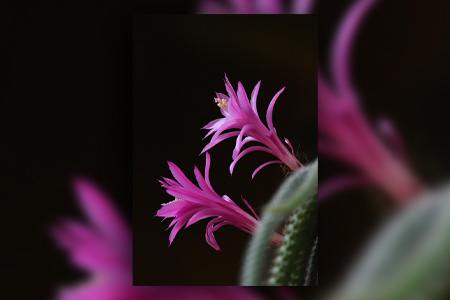
This southwestern Mexico and parts of Central America origin cactus (Aporocactus flagelliformis) are distinct for their narrow rat tail-like appearance that can grow up to 4 ft at maturity.
The flowers on these bloom in summer and spring, usually with violet-red colors, but sometimes come out with distinctive colors like pinks and oranges. Also, the flowers are tubular and typically grow up to 2 inches wide.
It grows on the ground or other surfaces like trees in the wild. However, these are generally grown indoors by gardeners.
Saguaro Cactus
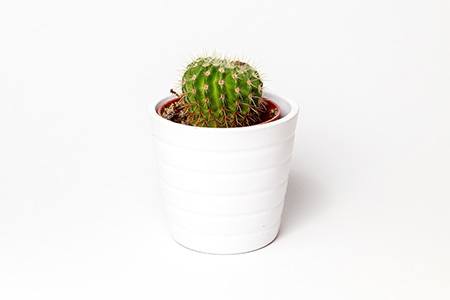
The Saguaro Cactus is the defining feature of the Sonoran desert. Typically found in Southern Arizona and Sonoran, Mexico, these are wonderful indoor cactus types to place in your home.
Furthermore, the most crucial factor for the growth of this cactus is water and temperature because the cold and frost can kill the cactus.
These cactuses can live for 150-200 years in the right conditions. Moreover, these are very slow-growing cactii. A 10-year-old cactus may only be 1.5 inches tall. Saguaro Cactus can also grow anywhere from 40-60 ft tall, and with enough rain, they can weigh anywhere from 3200-4800 pounds.
Christmas Cactus

The Christmas Cactus originated in southeast coastal Brazil in the shady and humid forests, and it's also considered an aesthetic-looking cactus for indoors.
However, it's best to leave them in small containers for as long as possible, then eventually move them to a larger pot with a rich, organic potting mix that should not be dried out.
To promote blooming, it's best to keep it in cool places with a short-day cycle. Wherever you place it, you must not turn on the lights at night.
Bishop's Cap Cactus
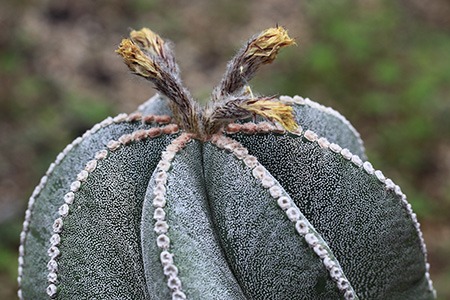
Bishop's Cap Cactus (Astrophytum ornatum) is from Texas and Central Mexico, typically reaching a maximum height of up to 39 inches and a diameter of 8inches. This perennial has a 6-to-18-inch stalk with alternative and infrequent heart-shaped and serrated leaves.
The gray-green flesh is covered with white flecks that usually pop up in spring and bloom soon.
They are best in dappled light away from the full midday sunlight and in soil rich in organic matter.
It is ideal to set the ground in early spring and keep them moderately moist until the plant establishes. This cactus produces an abundant amount of seed which can also be used as an indoor starter.
Fairy Castle Cactus

Cereus tetragonus is a Florida and Lower Rio Grande native cactus, a miniature cultivar species with curved branches resembling a castle.
These types of cacti indoors are a very slow-growing plant that reaches up to 6 ft in height with 5-sided wooly spines. The limbs are bright green, turning woody, and grow different limbs over time with interesting silhouettes.
Barrel Cactus
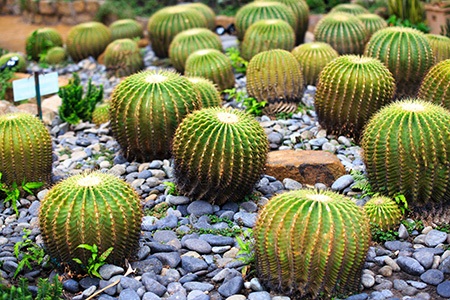
These indoor cactus types are ribbed, cylindrical-shaped cactuses with multiple genera, two of which are Echinocactus which has a fuzzy top of cactus, while the Ferocactus has much more ferocious thorns.
While growing types of barrel cactii in a pot requires a bright sunny spot. Moreover, the soil is mostly sand with topsoil, perlite, and compost. Unglazed pots are best because of the ease of evaporation of excess water
Known as Echinocactus grusonii, it requires very minimal watering. Once a week in summer and once from December to February.
Star Cactus
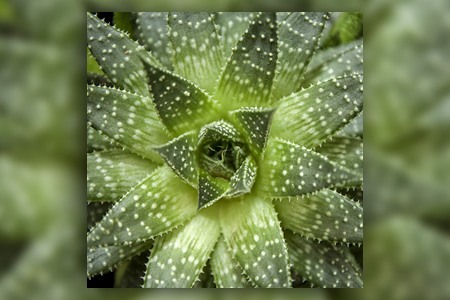
Native to North America, Nuevo León, and Tamaulipas, Astrophytum asteria is considered endangered by the United States Fish and Wildlife Services.
It is a low-maintenance cactus standing 3 inches tall and 6 inches wide with a ribbed structure and triangular sections around the wooly areoles. This gray-white star cactus is covered in white dots that blooms with yellow flowers and orange center from March-May.
Additionally, it requires full sun and a well-drained sandy pot. The ideal place for this cactus is in a warm location with a balanced mix of fertilizers and to water it sparingly to avoid root rot.
Easter Cactus
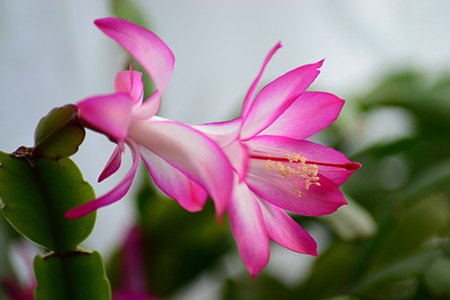
This beautiful indoor cactus species from Brazil thrives in cooler temperatures, can't tolerate direct sunlight, and requires nutrient-rich soil.
As an epiphyte, it is best in a porous soil mix that allows good airflow to the roots and is rich in organic matter. It blooms during the nighttime and colder temperatures even though they enjoy humid conditions.
Moreover, Easter Cactus also requires the soil to dry out until you can water it again completely. It can't tolerate being waterlogged around the roots. That makes these easy house cactus types since you won't have tons of maintenance work to do.
Moon Cactus
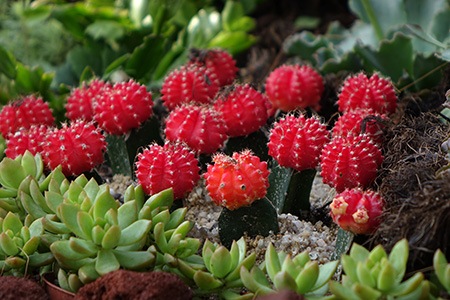
Native to desert habitats in South America, a group of cacti lacks the required chlorophyll to produce plant sugar through photosynthesis. Hence, being grafted on top of abundant chlorophyll upon which the moon can sustain.
These cactus types indoors prefer a warmer environment to survive, so an unglazed pot with multiple drainage holes is ideal and must be completely dried out before watering again.
The cactus also prefers a crowded home to share, which is an added benefit allowing you to re-pot in the same pot for years.
Blue Columnar Cactus
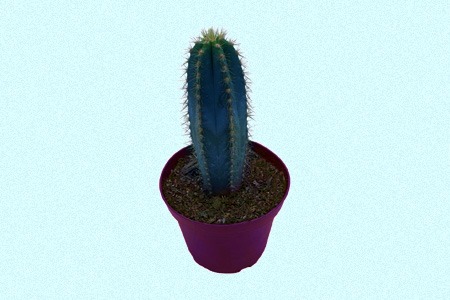
This amazing-looking desert cactus can grow quickly, adding about 1-2 ft annually. It typically flowers at night and is identifiable by its blue-green flesh complemented by yellow spines.
These indoor cactus types require roughly 10-12 hours of bright and direct sunlight. The more the sunlight, the better and brighter the skin color.
A dry soil mix with organic materials is also necessary for this cactus. To aid in drainage, it can also be potted in a terracotta or clay pot that absorbs extra moisture from the soil and prevents root rot.
Parodia Cactus
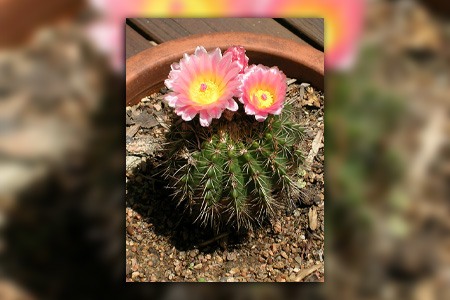
This Central South American cactus has moderate growth and can add about 4 inches a year in height.
Like most other types of house cactus, this type prefers a mix of airy, dry soil. Drainage is essential, so adding coarse sand, perlite, or pumice to the mix to help aerate the soil. Though the pH isn't a factor, the ball cactus thrives in a slightly acidic mix from 6.1-6.5 pH.
Being tolerant to drought, these cacti require being watered when the soil is dry to the touch and like being watered during the growing season. However, you can cease complete watering in the winter and let the soil be almost dry.
Ladyfinger Cactus
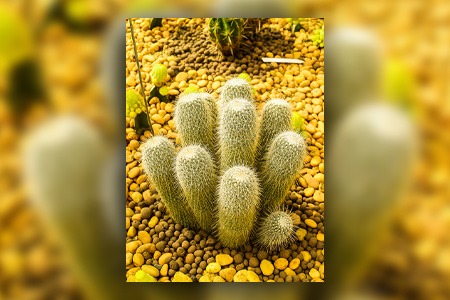
The tubes of these cacti (Gymnocalycium andreae) form dense green and orange clusters with yellow-pink flowers in spring. It's a slow-growing cactus that grows well indoors in a succulent container when provided with full enough to partial 4 hours of consistent sunlight.
Watering this is also easy and requires the "soak and dry" method, where you need to wait until the soil is almost fully dry to the touch until you can water it again. This is to ensure the roots are not rotting.
Dwarf Chin Cactus
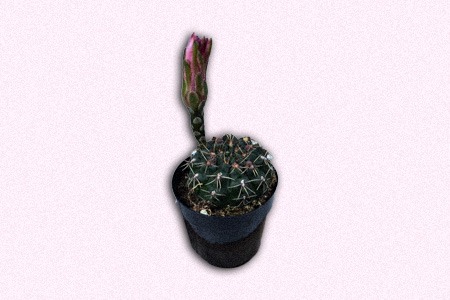
The cactus originates from the mountains and grassy regions of Argentina. It's a bulb-shaped semi-flat cactus that grows from 3 to 5 inches in diameter and 3 to 4 inches in height and consists of small unbranched, flattened, and spherical stems.
Moreover, it's best to place it in the brightest area with partial 4-6 hours of sunlight, avoiding extreme exposure and heat whether placed indoors or outdoors.
When watering, it's best to let the soil deeply and thoroughly soak up all of the water and then leave it alone until it's dried up again. You must also ensure that you plant these indoor cactus types where they don't have to tolerate extreme frost, like in a screened in patio.
Snowball Cactus
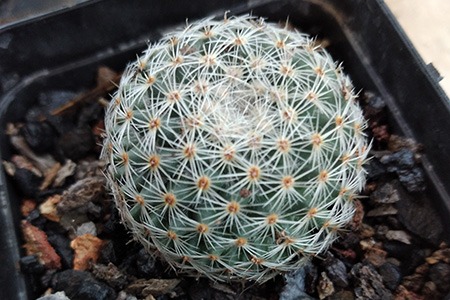
This Northern Mexican cactus is a densely covered spine cactus with a sometimes white substance known as wool. Like the other cacti, it enjoys the summer heat and the morning sun but survives well in the colder temperatures.
Strong sunlight for these types of cacti indoors can lead to bronzing of the plant's surface and promotes the growth of the wools and the spines. Hence, low humidity is ideal.
Watering for these specific types of cactus indoors is crucial to monetizing as it can kill the plant. It's best to be very limited with water and let it dry to keep it moist but not wet.
More Types of Cactus House Plants
We can't discuss every single possible one of the house cactus types, but for those who are really into it and want to explore the topic deeper, we can list some more of the indoor cactus plants as a starting off point. Please see those below:
- Bunny Ear (Opuntia microdasys)
- Lamb's Tail Cactus (Echinocereus schmollii)
- Old Lady Cactus (Mammillaria hahniana)
- Peanut Cactus (Echinopsis chamaecereus)
- Pincushion Cactus (Mammillaria crinita)
- Golden Rat Tail Cactus (Cleistocactus winteri)
- Dinosaur Back Cactus (Myrtillocactus geometrizans forma cristata)
There are also a bunch of false cactus plants, meaning they aren't truly cactii but people consider them such. You can look into those such as the Christmas Cactus, African Milk Tree Cactus, Zebra Cactus, Easter Cactus, Pencil Cactus, and Pebble Plant, among others.
Indoor Cactus Types to Brighten Up Your Home
There are many different types and varieties of cactuses to pick from, whether you want to plant indoors or outdoors. There's a wide range of types, shapes, sizes, seasonal, and even flowers.
These low-maintenance and easy-to-care-for plants can be a fantastic addition to your home, workspace, or window sill. These indoor cactus types can bring lush, vibrant greenery to your place with minimum effort.



